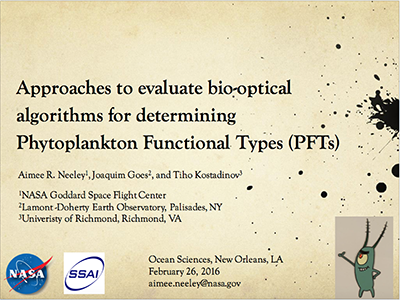Evaluation of Bio-optical Models for Discriminating Phytoplankton Functional Types and Size Classes in Eastern U.S. Coastal Waters with Approaches to Remote Sensing Applications

Phytoplankton pigment data have long been collected from aquatic environments and are widely used to model PSC and PFT abundances using two well-known methods: Diagnostic Pigment Analysis (DPA) and Chemical Taxonomy (ChemTax), respectively. Here we present the results of an effort to evaluate five bio-optical PFT models using data from a field campaign off the coast of the Eastern U.S. in November 2014: two based on biomass (Chlorophyll a), two based on light absorption properties of phytoplankton and one based the inversion of remote sensing reflectances. PFT model performance is evaluated using phytoplankton taxonomic data from a FlowCam sensor and DPA and ChemTax analyses using pigment data collected during the field campaign in a variety of water types and optical complexities (e.g., coastal, blue water, eddies and fronts). Relative strengths of the model approaches will be presented as a model validation exercise using both in situ and satellite derived input products. Author(s): Neeley, A.R., Goes, J.I., Jenkins, C.A., and Harris, L.

